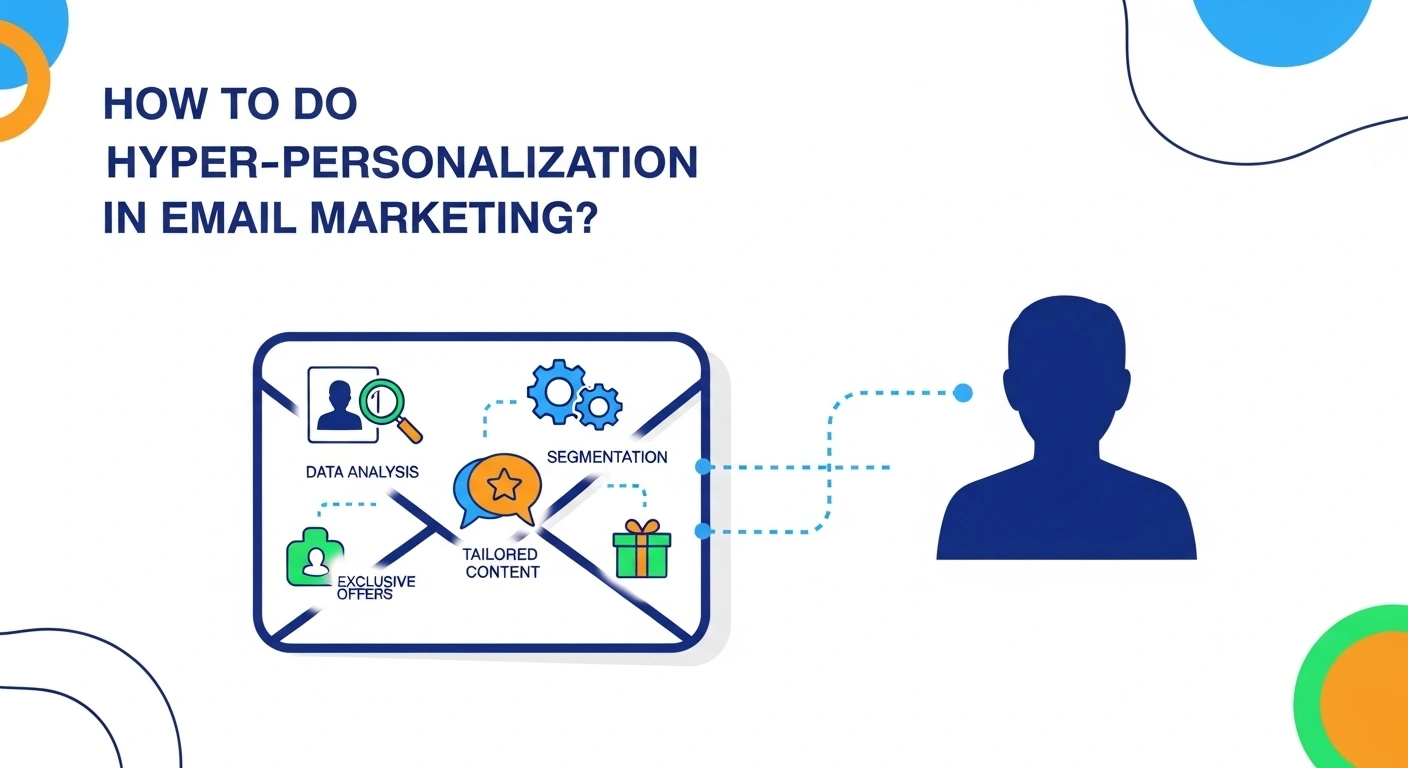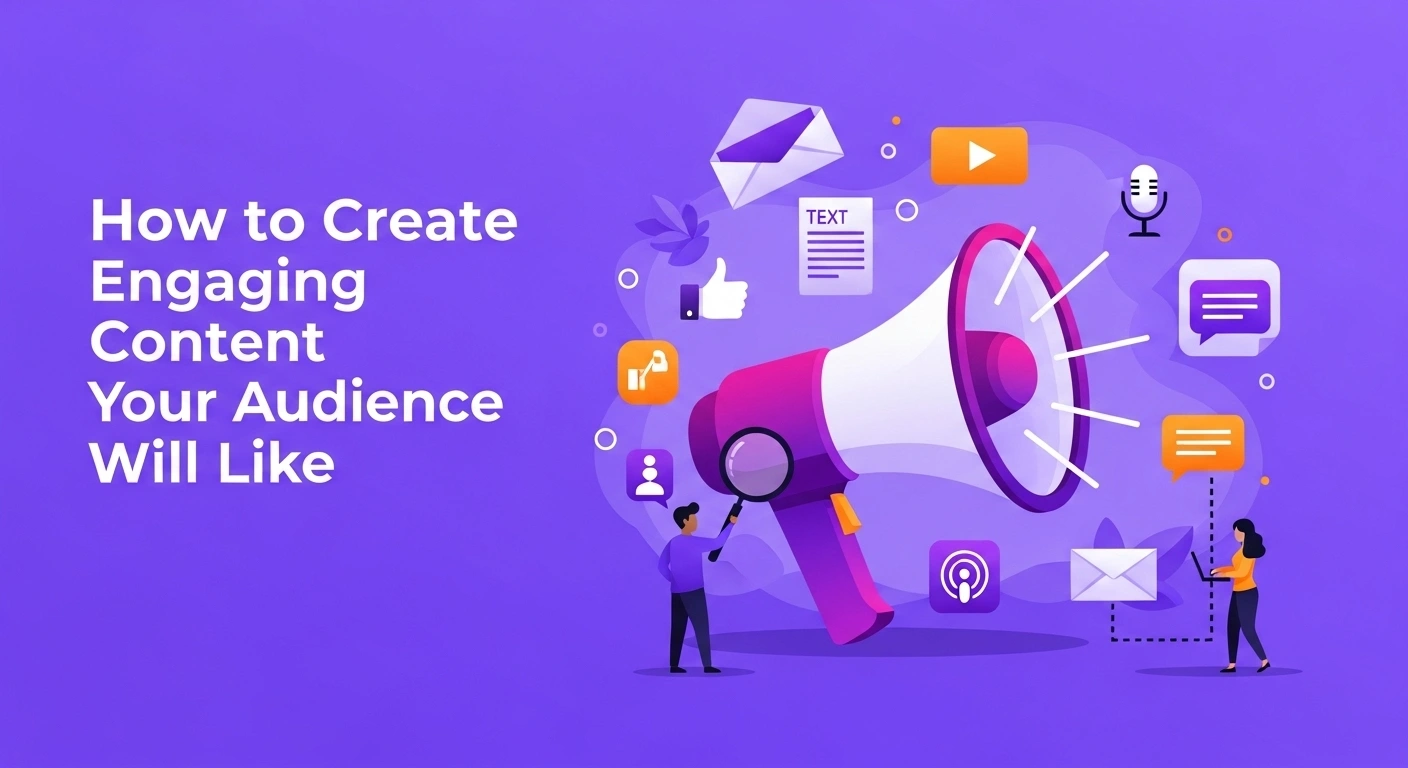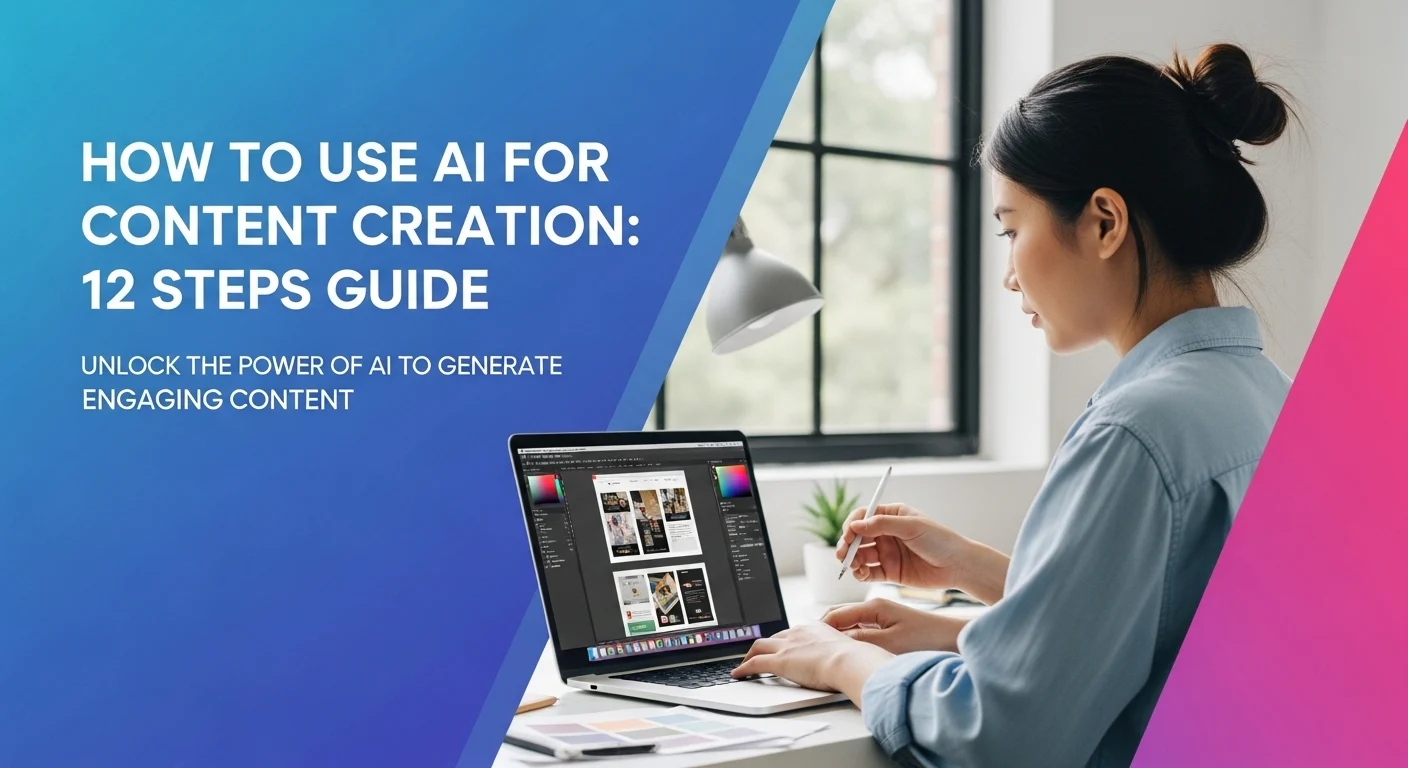Emails are one of the effective marketing channels for companies. But sending bulk emails with similar subject lines and content is no longer working in the industry. That’s where hyper-personalization comes in. Personalized emails boost engagement, delivering 29% higher open rates (No-follow) and 41% more click-throughs than generic messages.
This article will guide you through effective ways to implement hyper-personalization in your email marketing strategy.
Looking to boost your skills? Our Digital Marketing Course offers practical insights and hands-on training to help you master the latest strategies and grow your career.
What is Hyper Personalization in Email Marketing?
Hyper personalised emails mean the email that is curated using an AI, machine learning, and the real-time data of the customer, which shows the preferences, behavior, and other aspects.
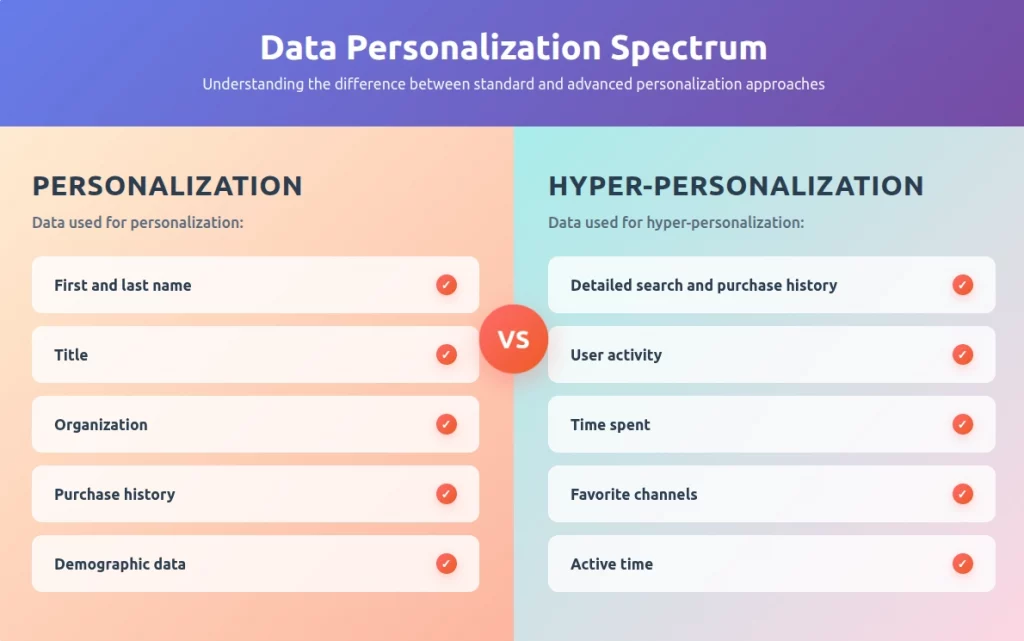
Different from standard personalized email marketing, which cuts short at first-name addressing or demographic targeting, hyper personalization is concerned with dynamic product recommendations, behavioral triggers, real-time content adjustments, and predictive customer needs.
How to Do Hyper Personalization in Email Marketing
Hyper-personalization emails use data like previous purchasing behaviours beyond name, city, and other basic details; they deliver relevant email that exactly matches the customer’s needs and gives better results and increases the open rates. Below are the steps that show how to do hyper-personalized emails.
How to do hyper-personalization in email marketing
1. Collect and Analyze Customer Data
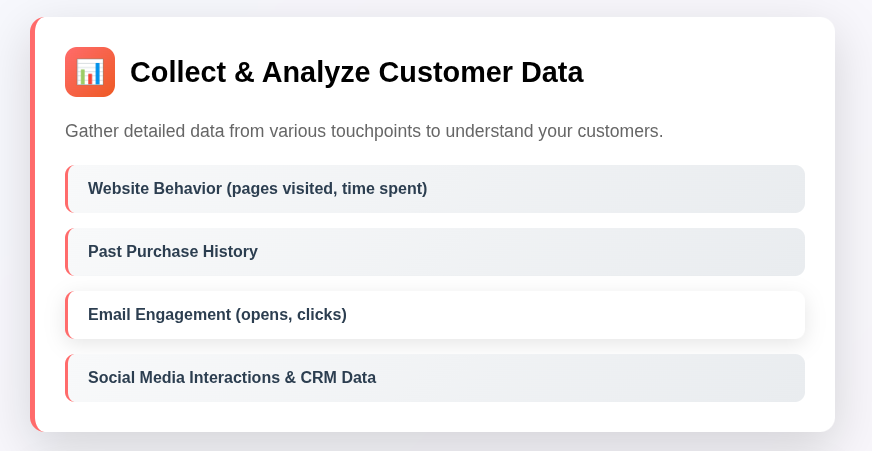
The foundation of hyper-personalization lies in data. Gather detailed data from various sources such as:
- Website behavior (pages visited, time spent, clicks)
- Past purchase history
- Email engagement (opens, clicks)
- Social media interaction
- CRM data and customer surveys
2. Segment Your Audience Intelligently
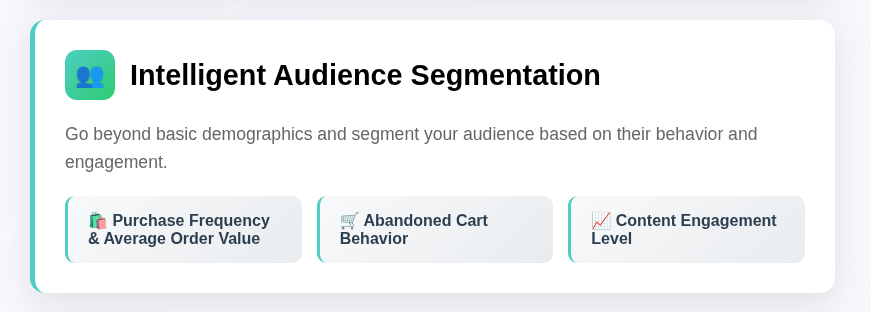
Basic segmentation isn’t enough for hyper-personalization. Go beyond age, gender, and location. Segment your list using:
- Purchase frequency
- Average order value
- Abandoned cart behavior
- Time since last purchase
- Content engagement level
Let’s understand with an example, suppose a user who searched for a shoe can be added to the list where the shoe companies can send him guides or offers to buy shoes. This type of segmentation enables more engagement and better conversions.
3. Scale Personalisation with Automation and AI
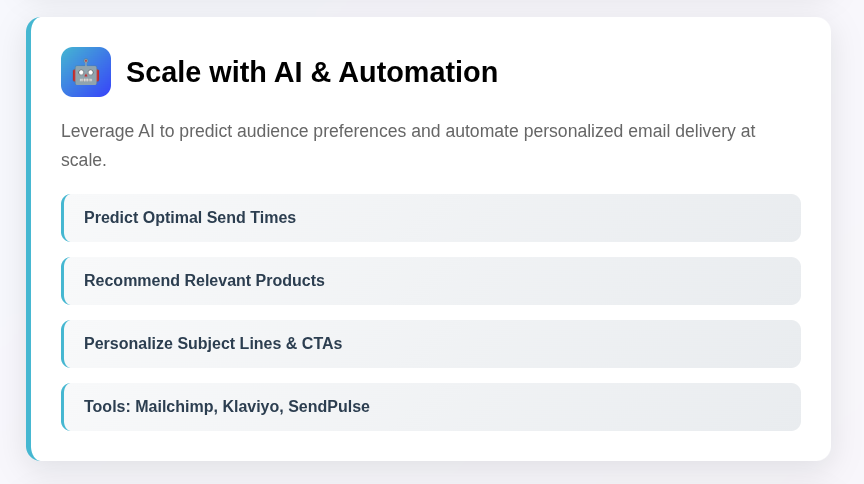
AI in email marketing can be very useful, if you can see from a broader aspect, it can help you predict your audience preferences and what they would like to engage with. And with automation, you can send personalized emails in bulk at a larger scale. With AI, you can,
- Predict optimal send times
- Recommend products
- Personalize subject lines and CTAs
- Set follow-ups
- Perform lead scoring
There are tools like Mailchimp, SendPulse, Klaviyo, and ActiveCampaign that offer AI-based personalization capabilities.
Read: Top Email Marketing Tools
4. Craft Dynamic and Personalized Email Content
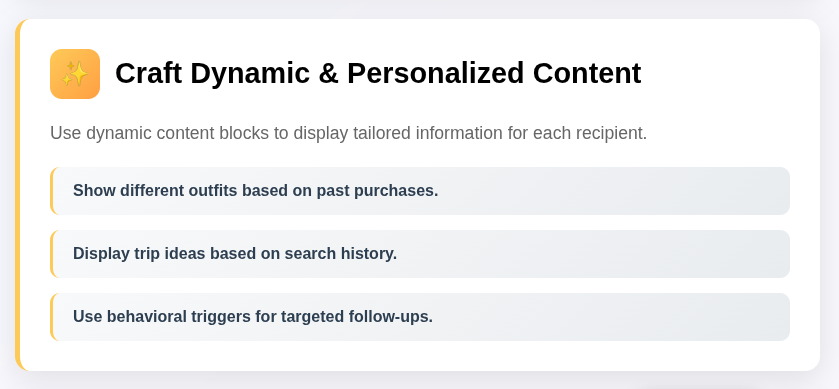
You can create dynamic and customized email content using content blocks that learn about every recipient's profile. For instance, display product suggestions based on browsing history, render messages more context-aware, and stimulate engagement and conversions. For example,
- A clothing brand can show different outfits based on past purchases
- A SaaS company can show product updates based on usage patterns
- A travel site can display trip ideas based on search history
You can also keep your emails neat and clean but data-rich. You can also use behavioral triggers (like cart abandonment or app inactivity) to send hyper-targeted follow-ups.
Read: Ways to Use AI for Content Creation
5. Optimize Subject Lines and CTAs with Personal Touch
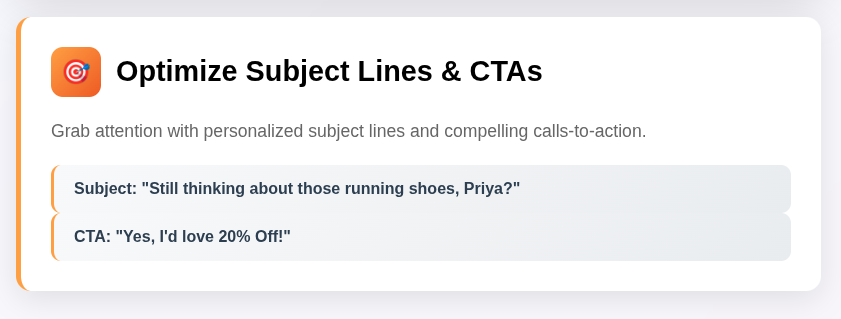
In an email, the most attention-grabbing thing is the subject line, so it should be beautifully drafted with extra care. Instead of repetitive boring phrases, always try to add a personal touch by including the recipient’s name or the product they showed interest in. For example, “Still thinking about those running shoes, Priya?” feels far more engaging than “Don’t miss this offer!”
For your Call-to-Action (CTA). Instead of a bland “Click Here,” use language that feels more human and relevant to the reader, like “Yes, would be happy to get 20% Off.” Tiny changes like this will make your emails feel less like ad strategy and more like helpful suggestions just made thoughtfully for your consumer.
Alt text: best practices for subject lines and CTA’
Make your CTAs action-oriented and aligned with the user's journey stage:
- “Finish your purchase now.”
- “Explore similar products”
- “Book your next adventure.”
This increases the conversion rate of your personalized email campaigns.
6. Leverage Behavioral Triggers for Timely Emails
Some of the best email platforms allow you to create workflows that automate these triggered emails. Set up a workflow that is based on triggers (like abandoning a cart or browsing a product page), which will help to send timely follow-ups. Then, test different aspects of your trigger-based emails: subject lines, timing, and CTA placement.
Behavioral triggers are powerful, but should be used strategically. You should also align your messages with where the customer is in their journey and by understanding this you can boost engagement and conversions.
Examples of behavioral triggers:
- Browsing specific products or categories
- Downloading a resource
- Inactivity for a set period
Best Practices for Hyper-Personalization Email Marketing
Hyper-personalization can help companies deliver customized emails that are relevant and relevant on time which can help boost engagement and conversions.
- Respect privacy: You should always get clear consent of the consumer before using personal data in order to respect the privacy of your consumer.
- Be relevant: Personalization should be relevant enough to not cause discomfort. It should also add value to your consumer.
- Combine personalization with storytelling: Try to craft meaningful narratives and creative storytelling, not just simply put names.
- Get more responsive design: Make sure hyper-personalized emails look great on all devices.
Brands Using Hyper-Personalized Emails
- Amazon: Amazon uses browsing data and purchase history to suggest related items to the users.
- Spotify: Sends personalized “Year in Review” emails based on listening history for every user to connect with them more deeply.
- Netflix: Recommends shows based on watch behavior and ratings after understanding your personal choices that differ from time to time.
These brands effectively blend AI in email marketing with deep user understanding to drive engagement.
Conclusion
So, here is the take that hyper-personalization is not only about sending customers offers and emails to buy, but it deeply understands what they need and how they can buy it. It’s a right mixture of all the steps, like segmenting, using automation tools, gaining trust, and then working on better leads and better conversions, which can become a long-term brand-customer relationship.
